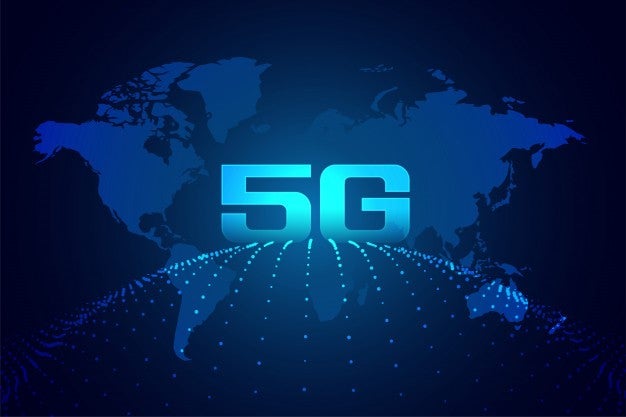This post is the first of a two-part series on 5G systems.
Imagine a world with no wires or cables, where virtual reality is always present and accessible. In the post-COVID-19 era, the educational landscape has sped into digitalization. Most classrooms have adopted some form of virtual learning, requiring video conferencing and other devices, but that has not come without technical difficulties. The lack of access has amplified the technological gap in parts of the world.
However, the integration of 5G networks into education delivery has the potential to revolutionize connectivity issues and streamline classroom logistics while improving the quality of the entire learning experience. 5G will help teachers across all educational levels facilitate an enhanced experience for learners. So, what is 5G, and how can the global education community use its capabilities to transform teaching and learning now and into the future?
What is 5G?
5G, or fifth-generation wireless technology, is the fifth iteration of cellular network operations. It differs from 4G, the most prevalent wireless technology, due to latency — the delay between sending and receiving information. With its extremely low latency rate, 5G allows educational delivery to be faster, more reliable, and smoother . For example, when compared to a 4G cell tower, a 5G cell tower can hold and support about 10 times as many devices. This is highly relevant in an educational scenario since lower latency and greater available bandwidth will support superior levels of communication over larger distances.
Take the university campus, for instance. An expanded campus reach can improve accessibility to wireless networks, and some universities have already begun the integration. The University of Miami first brought this technology to its campus, making it easier for students to access classes and engage in academic pursuits. 5G can also improve the quality of video conferencing, add haptic response capabilities, strengthen immersive learning experiences using virtual reality (VR) and augmented reality (AR), and allow for the personalization of education. For example, the AR app Froggipedia allows students to study a frog’s internal organs without harming any real frogs. It also enables students to visualize the transformation of frogs from tadpoles into their adult form. Another example, in continuing education, is VirtualSpeech, a VR tool that helps individuals work on their public speaking skills in a more effective and realistic manner.
How can 5G transform the global classroom?
Let us now look at the five main benefits of 5G for learning:
1. Improved interaction between teachers and learners and collaboration among peers
When you log into Zoom, there is a high propensity toward lagging and breaks in connectivity, which negatively impacts educational delivery. With 5G, video conferencing platforms will improve in quality and reliability around the globe. Therefore, instead of waiting for programs to load, time will be better spent connecting teachers with learners, even in remote settings. Teachers will save time by not having to work around delays in connectivity or breaks in audio and video connections and instead focus on the learner. Students will be able to download videos and learning materials faster and even have holograms of guest speakers in their classroom without dips or delays. Also, since 5G allows more data to be transferred, communication among peers for group projects will happen faster and with less lag — almost as if people across geographies are sitting in the same room.
2. Accelerated quality and adoption of immersive learning
Some skills, such as lab work and hands-on experiences, require extra tactile stimulation to engender the same level of learning online as in real life and real-time. Those interested in learning new skills and visualizing abstract concepts in an interactive way can benefit from the integration of AR and VR into immersive classrooms. 5G will provide a greater network capacity and seamless experience that allows learners to explore complex concepts through zooming, pinching, and even touching. Further, haptic responses (that reproduce the feeling, touch, or motion of interacting directly with a physical object) could introduce tactile forms of learning to a classroom through traditional video conferencing platforms, making interactions richer.
3. Personalized learning experiences
Education generally follows a one-size-fits-all approach that many say could hinder growth. 5G has the capability to change that! It will improve personalization by creating intelligent systems to understand the unique needs of each student and create targeted learning journeys. For example, virtual teaching assistants could allow cohorts to access different sets of lessons and assessments depending upon the profile and preferences of learners. This has implications for skilling and upskilling as well as technical and vocational education and training (TVET).
4. Boosted on-the-go learning
As 5G expands to reach more aspects of daily life, it will make learning on-the-go easier, providing greater responsiveness and speed across all devices, especially mobile. Imagine the increased flexibility given to busy students and professionals who want to (and need to) learn outside the classroom.
5. Leveled playing field
5G will accelerate the promise of democratizing access to quality education in inclusive and affordable ways, thus leveling the playing field, especially for under-resourced communities. For example, the 5G-enabled Verizon Innovative Learning classroom brings learning to life through immersive worlds. It has the power to change the way all of us learn.
5G clearly has a lot to offer in education. In the next installment of this series, we will examine some of the challenges facing the rollout of the technology for learning and how it might contribute to Sustainable Development Goal 4—Quality Education.



Join the Conversation